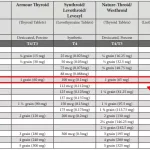Cetirizine is a nonprescription medication that can ease mild to moderate allergy symptoms.
Cetirizine is an antihistamine available over the counter (OTC) at most pharmacies, so you don’t need a prescription to purchase it.
It’s sold in capsules and tablets and is usually taken once daily, producing fast relief.
It’s also affordable — often under $1 per day for brand-name versions (Zyrtec, Aller-Tec, and Alleroff), with generics costing even less.
Overall, cetirizine is generally safe and effective, but there are important precautions and warnings to consider. Read on to learn how it works, what it treats, and how to use it responsibly.

Why cetirizine is used
If you have persistent year-round allergies or seasonal allergies like hay fever, your clinician may suggest cetirizine. It can relieve allergy symptoms but won’t prevent allergic sensitization.
When you encounter allergens, your immune system releases histamine, a compound that triggers most allergy symptoms.
Cetirizine is an antihistamine that blocks histamine’s actions.
It can alleviate mild to moderate allergy symptoms, including:
- sneezing
- runny nose
- itchy or watery eyes
- itchy throat or nose
These symptoms can occur after contact with airborne or touch allergens such as pollen, mold, or pet dander. Allergies mainly affect the nose, sinuses, throat, and other parts of the upper respiratory tract.
Cetirizine also treats hives — raised, itchy skin rashes that often arise from food or medication allergies.
How to take cetirizine
Adults and children aged 6 years and older may use cetirizine capsules and tablets.
The typical dose for adults under 65 and children 6 years and older is a single 10-milligram (mg) dose once daily.
Do not exceed 10 mg in 24 hours. For milder symptoms, a doctor might advise 5 mg once or twice daily.
Consult your clinician about dosing if you:
- are between 2 and 6 years old
- are older than 65 years
- have liver or kidney disease
Side effects of cetirizine
Cetirizine is a second-generation antihistamine. Compared with first-generation antihistamines, it’s less likely to cause severe drowsiness, dry mouth, blurred vision, or overheating.
However, cetirizine can still cause side effects, such as:
- some drowsiness
- unusual tiredness
- dry mouth
- stomach discomfort
- diarrhea
- vomiting
Tell your doctor about any unexpected reactions you experience while taking cetirizine, and discuss persistent or bothersome side effects. These are typically not medical emergencies.
Precautions and warnings
Consider the following before using cetirizine.
Be cautious when operating machinery
Although cetirizine usually causes little drowsiness, some people may react differently, especially with the initial doses.
Exercise caution. Avoid driving or using heavy machinery until you know how cetirizine affects you.
Check product ingredients
Do not use cetirizine if you’ve had an allergic reaction to it or any of its components. Also avoid it if you have a known allergy to antihistamines that contain hydroxyzine.
Consult your provider if pregnant or breastfeeding
Speak with your healthcare provider before taking cetirizine if you are pregnant, planning pregnancy, or breastfeeding. In general, cetirizine is considered safe during pregnancy, but verify with your clinician.
Talk to your doctor if you have certain health conditions
If you have liver or kidney impairment, discuss cetirizine with your doctor. If they determine it’s appropriate, they may suggest a lower dose than usual.
Drug interactions with cetirizine
Cetirizine can interact with other substances.
For instance, avoid alcohol while taking cetirizine. Combining them can be hazardous and may increase drowsiness or reduce alertness.
If you use tranquilizers, sedatives, or sleep aids, inform your doctor before starting cetirizine.
Combining cetirizine with central nervous system depressants can heighten sleepiness and further impair mental and nervous system function.
There’s also a potential interaction between cetirizine and theophylline. Theophylline (Theo-24) is used by some people with asthma and other pulmonary conditions.
When both drugs were used together in some cases, cetirizine clearance was slower. This interaction may depend on dosage and has mainly been reported with daily theophylline doses of 400 mg or higher.
Discuss cetirizine use with your doctor if you take theophylline.
»MORE:Get an evaluation for seasonal allergies in as little as 15 minutes with Optum Now Online Care.Optum Now is operated by RVO Health. By clicking this link, we may receive a commission. Learn more.
Cetirizine-D
Cetirizine-D and similar brand products like Zyrtec-D combine cetirizine with a decongestant — the “D” stands for decongestant. These contain cetirizine plus pseudoephedrine.
Pseudoephedrine is a stimulant and can exacerbate certain health issues. Your clinician may advise against cetirizine-D if you have any of the following:
- heart disease
- thyroid disorders
- diabetes
- glaucoma
- high blood pressure
- enlarged prostate with urinary retention
Talk with your doctor
As with any medication, including OTC drugs, make sure you understand the considerations before starting cetirizine.
Discuss your questions and medical history with your clinician. They might recommend a different antihistamine or a prescription combination product depending on your needs.
Consider asking your doctor these questions about cetirizine:
- Is cetirizine an appropriate option for me? What are the alternatives?
- How often should I take cetirizine, and what dose is right?
- What effects should I expect after taking cetirizine?
- Can I use cetirizine with my current medications and health conditions?
- Are there any other risks associated with this medicine?
- What are signs of a serious reaction, and what should I do in an emergency?
If you need assistance finding a primary care physician, try our FindCare tool here.


















Leave a Reply
You must be logged in to post a comment.